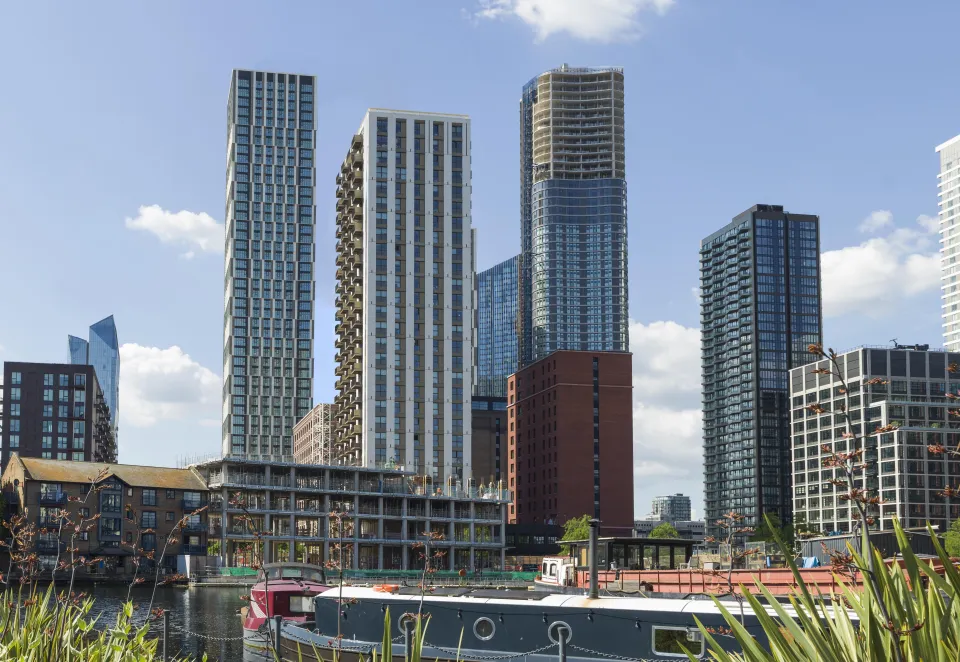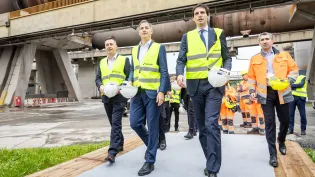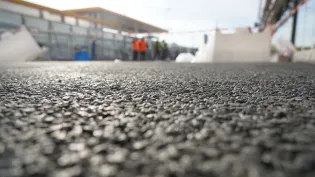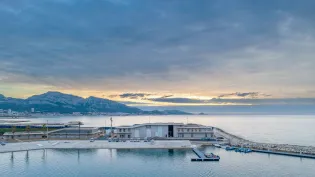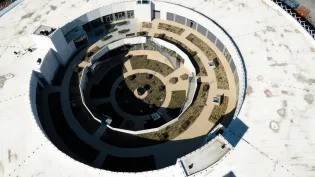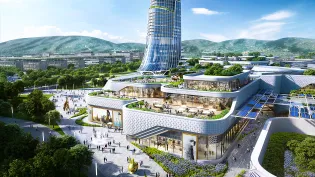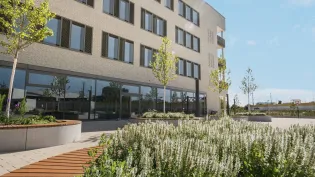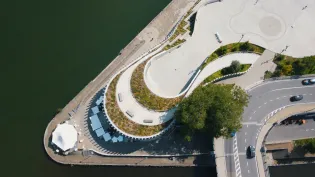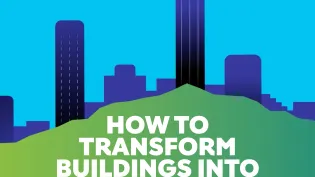Can denser cities curb climate change?
With the world building the equivalent of New York City every month for the next 40 years, staying within our planet’s boundaries while we build to improve living standards for all is a must. That means cities have a central role in finding solutions and mitigation strategies when it comes to solving climate change.
We sat down with Shajay Bhooshan, Associate Director at Zaha Hadid Architects, to get his perspective on how the densification of cities can accelerate climate action, as well as technological innovations and prospects for circular construction.
You’ve said before that density of cities is “one of the biggest stumbling blocks” to achieving the UN’s Sustainable Development Goals. Why?
I believe densification is an important aspect of sustainable development, or at least mitigating a large part of the built environment’s effect on climate change. And currently it is a stumbling block because throughout the 20th century, the density of our cities has dropped. What do I mean by density? At the base level it means the number of buildings in a given area. But even more importantly, you can start thinking about the intensity of human activity in a given area.
Is it used all throughout the day? The 20th century paradigm has been that there's a place where you work and a place where you live and a place where you do certain other things. During daytime some parts are used and during nighttime other parts are used. So we need to build different buildings for all these different needs, and maintain and supply all of them with energy.

Density has kept dropping because of various policies – economic policies and regulatory policies. There are also social aspects like “NIMBYism” (“Not in My Backyard”) where people oppose development within the cities and so cities are left to only grow outward, increasing transport costs, the use of private vehicles, per capita infrastructure costs and so on.
Cities like Barcelona and Tokyo demonstrate that urban density can help provide services to more people using less resources. They are also interesting from the perspective of how they have densified over time. There was a study by the London School of Economics that compares Barcelona with Atlanta, both of which have similar populations of around 5 million people, but Atlanta had 6 to 7 times the carbon footprint. So density is a critical part of social prosperity and wellbeing, and also an important tool in combatting climate action.
How can urban densification become part of the solution to climate change?
I recently read a report by the Berkeley Cool Climate Network where they studied around 700 cities in California and various climate mitigation policies, and found that urban infill (or urban densification), is by far the most impactful strategy to reducing cities’ carbon footprints. That's significant.
I think it could be a relatively easy change to effect because what we need is a change in social perceptions that density is a good thing. Now people have these romantic ideas that we need to be in our own private garden and the pandemic exacerbated this.
It’s up to architects to keep investing, digitizing and developing new exciting design proposals for denser urban areas. They need to be exemplary, they need to be best practice and they also need to promote a new aesthetic because that's what is needed to move public opinion. It is also important to consider developing civic awareness, engagement and participation in the built environment which has also been dropping throughout the 20th century. So denser cities could help societies live communally, and people having a voice in the built environment becomes important. Architects and experts can help develop both design solutions and give people a participatory voice.
That’s why it’s good to see companies like Holcim taking the right steps by engaging with architects like Prof. Dr. Philippe Block to create new pathways that enhance traditional wisdom, but also augment it with computational technologies.
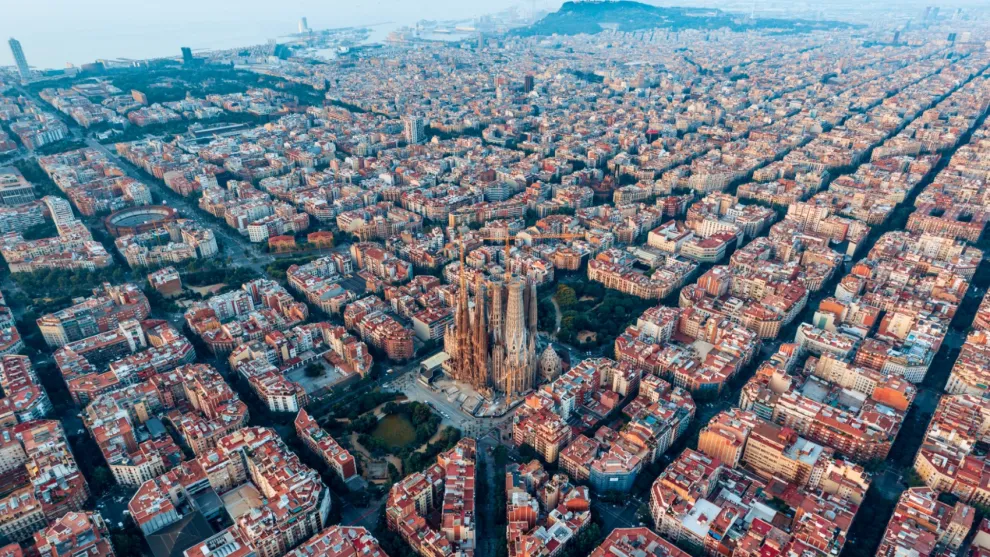
Alongside trying to change civic perception and engagement with these aspects, we can start creating architectural, engineering and logistical solutions to densify and, thus, decarbonize our cities. In more urbanized economies it could mean reusing and repurposing existing buildings and/or building parts. In urbanizing economies in Africa, India, China and Southeast Asia, it would mean developing building solutions that are designed to be disassembled, reconfigured, etc. This is because cities need to evolve and adapt to both discover and to sustain societal prosperity. So regardless of where we are building, developing design and construction technologies should incorporate aspects of the so-called 5R framework of circularity : Refuse, Reduce, Repair, Reuse and Recycle. This goes hand-in-hand with using circular materials such as the low-carbon cement and concrete that Holcim is developing and producing. So taken together - urban densification can go a long way in addressing UN SDG 9, 11, 12 and 13.
How can the world’s cities sustain rapidly growing populations without further depleting resources and emitting CO2?
By 2050, between 60% and 70% of the world's population will be living in cities. If we design and build cities the way we do now, we would need to build one New York City every month. That's problematic because we will misallocate resources, and we know there's a finite amount of resources on the planet.
We could be more effective in the way we use our resources. For me part of being effective is to use spaces more intensely. For example, some people live in one area of the city and work in another, while we can and should have a lot more mixed use.
Where we do need to build new structures, we need to build smartly. We demonstrate this through projects like Striatus where we, Zaha Hadid Architects, in collaboration with the Block Research Group, incremental3d and Holcim used 3D concrete printing to build a bridge. We showed that with computational and digitally augmented knowledge we can achieve a lot of the “reuse, recycle and reduce” of materials, and this was recognized with various architectural awards. Making cities more circular in this way is key to limiting our use of natural resources and minimizing the strain on the planet.
This is also the first step toward showing new ways we can use materials like concrete, which is the most widely available construction material. With more than 600 years of concrete engineering, it shouldn’t be discarded, we just have to make it low-carbon. Once we do that, it will automatically lend itself to helping us densify cities and privileging material savings.




